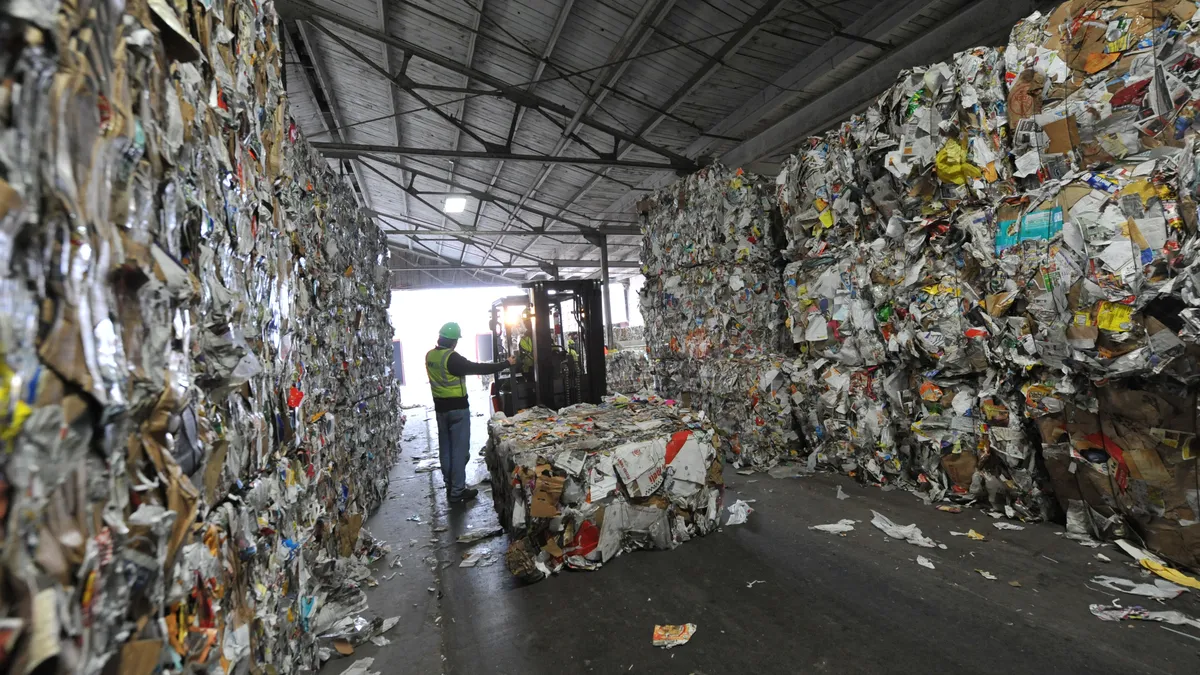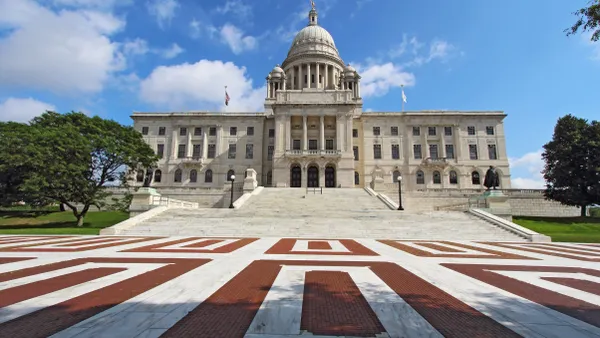Dive Brief:
- WM Canada has begun construction on two new recycling facilities in Ontario, Canada. The facilities are expected to process 30% of the province’s residential recycling volume under its extended producer responsibility program known as the Blue Box program.
- When completed in late 2025, WM Canada’s facilities will process the materials under a contract with Circular Materials, a Blue Box producer responsibility organization.
- The technology in the brand-new facilities aims to help meet stringent recovery standards under Ontario’s updated EPR plan. Equipment will also be able to sort items that are new to the Blue Box system, such as film packaging, said Tracy Black, president of WM Canada.
Dive Insight:
Some major North American waste companies are closely monitoring EPR programs throughout Canada in an effort to identify new residential collection and MRF operation opportunities. WM’s two new Toronto-area MRFs represent the company’s increased focus on recycling investment in Ontario, one of the provinces undergoing significant changes to its packaging EPR regulations.
Ontario is in the process of transitioning the management of Ontario’s Blue Box program to packaging producers, a process that will make them fully responsible for collecting and recycling the materials. That transition process is ongoing, but is expected to be complete by Jan. 1, 2026.
As part of the EPR transition updates, the list of materials accepted in the Blue Box program will be expanded and standardized. Processors will need to meet high recovery standards for those materials.
WM’s proposal to Circular Materials called for building greenfield projects to better manage the anticipated material stream changes. “Some of the existing infrastructure was a little more antiquated in the province, [so] being able to have a purpose-built facility really helps us to be able to help the PRO meet the regulatory requirements,” Black said in an interview with Waste Dive.
The high-tech facilities — one in Waterloo and the other in Greater Napanee — are meant to increase the overall recycling capacity in the area. The facilities will each be able to handle 40 metric tons an hour “using the most advanced technology that we have available,” Black said. WM did not disclose the project cost, but Black said the investment is in addition to the $1 billion WM has previously announced it would invest in recycling infrastructure by 2026. WM also plans to invest over $200 million in Canadian recycling.
Allen Langdon, Circular Materials’ CEO, added in a statement that the facilities will also streamline the process of returning recycled materials back to producers to be used in new packaging.
WM already has a commercial recycling facility in the Toronto region, but the two new MRFs are the first major residential recycling projects specifically built to align with the region’s EPR program, said Brent Bell, WM’s vice president of recycling.
WM has worked closely with Circular Materials on the project, which has led to in-depth conversations with brands about how to change their packaging designs to be more recyclable, he said. “You're never going to increase recycling rates unless you have that constant conversation and communications back with the brands that are making the packages to begin with,” he said.
Though the company has not announced other major EPR-related projects in Canada, WM has previously said it is working to build more partnerships with PROs in both Canada and the U.S. and keeping an eye on how localities roll out their new and updated EPR laws.
Ontario isn’t the only province working on EPR updates. Quebec, Saskatchewan, New Brunswick and Alberta are in the process of updating their EPR programs, while provinces such as Newfoundland and Labrador, as well as the Northwest Territories, are mulling whether to adopt packaging EPR programs of their own.
Black added that EPR is a “fairly significant” factor in how the company invests in recycling in the future because of the number of other provinces involved in such EPR programs.
“We’re definitely interested in looking at the opportunities as they come up, with a similar strategy to what we did for Ontario,” Black said. “How do we fit in, what's the existing network look like?”
Editor’s note: This story has been updated to include WM’s planned investment level in Canadian recycling infrastructure.














